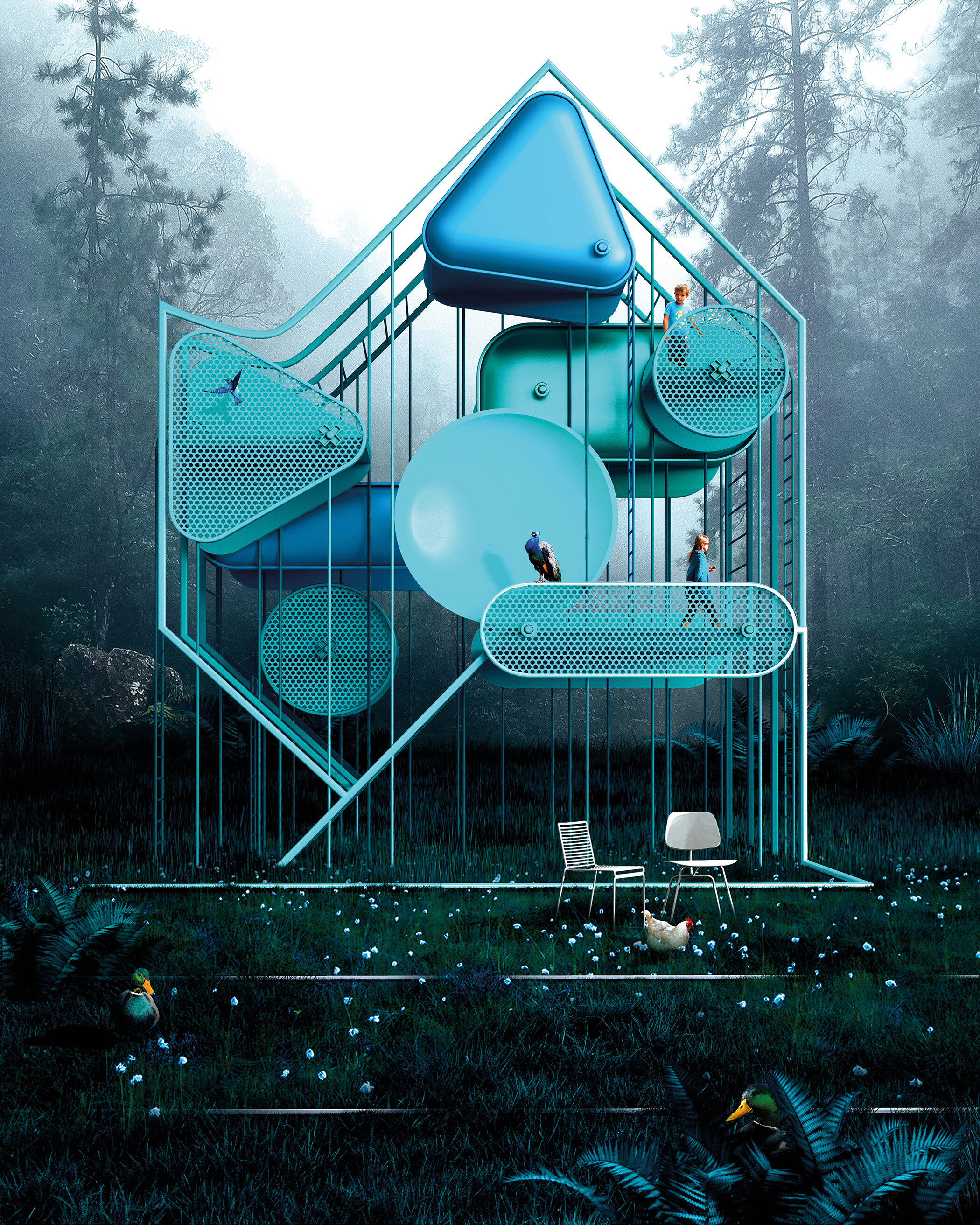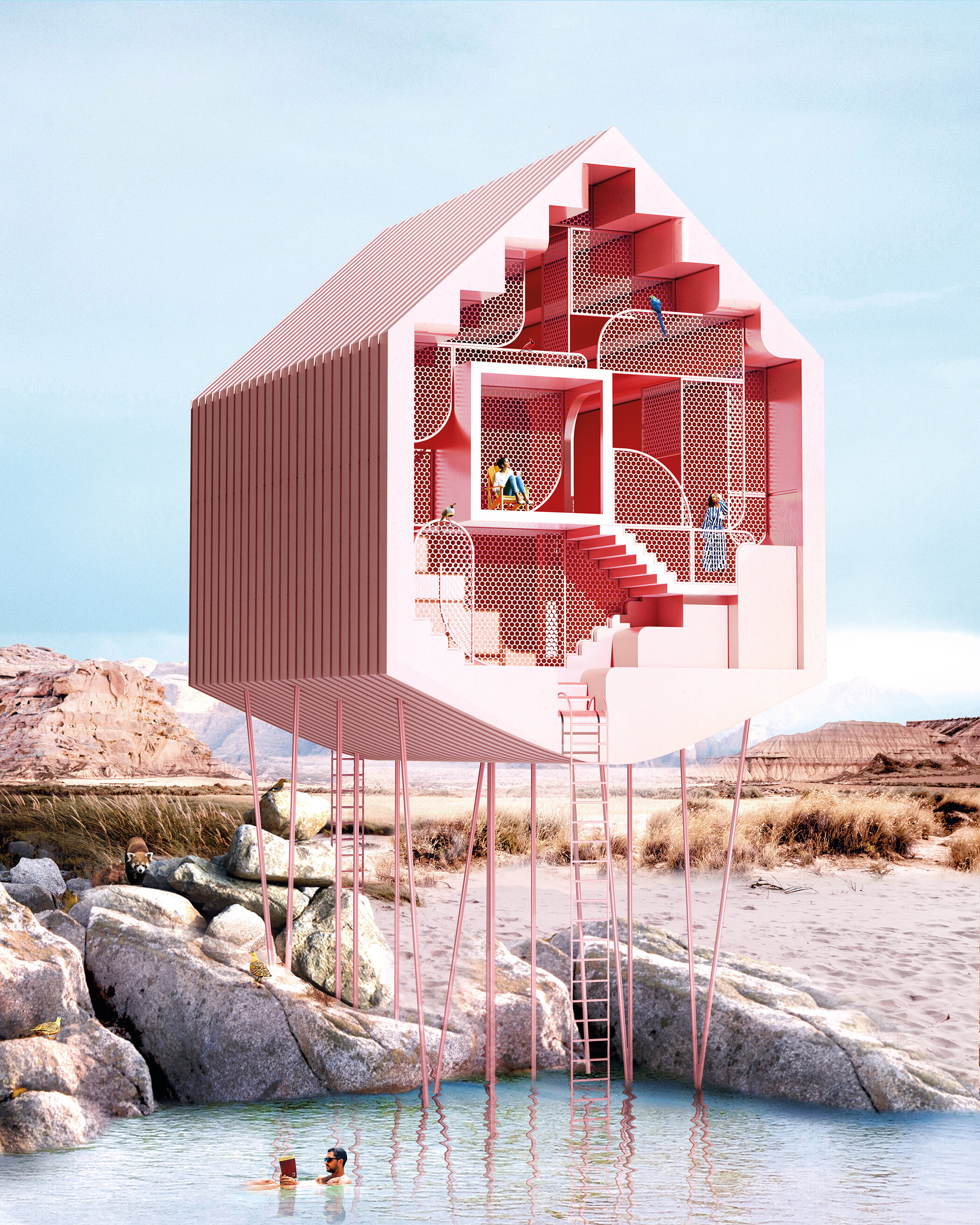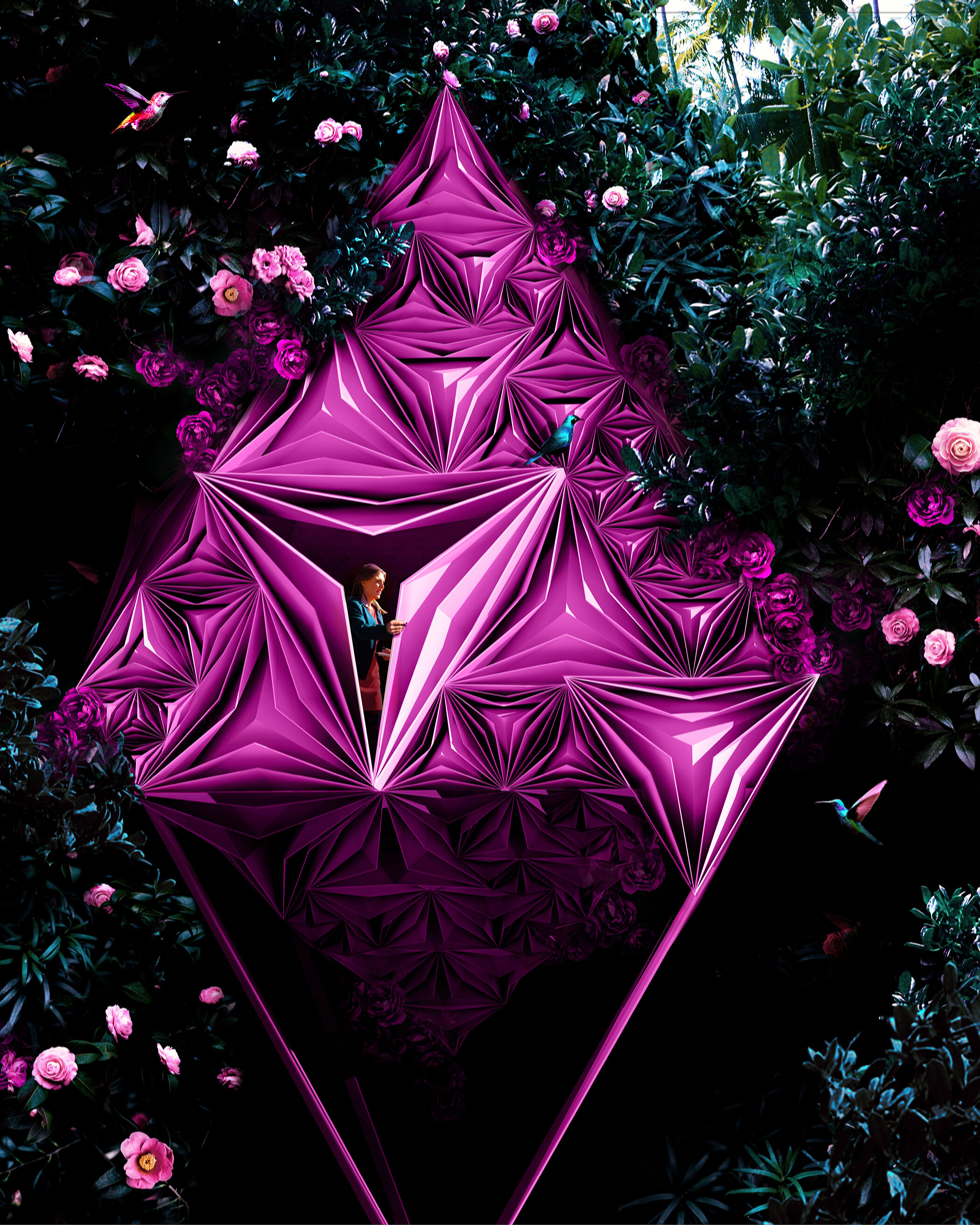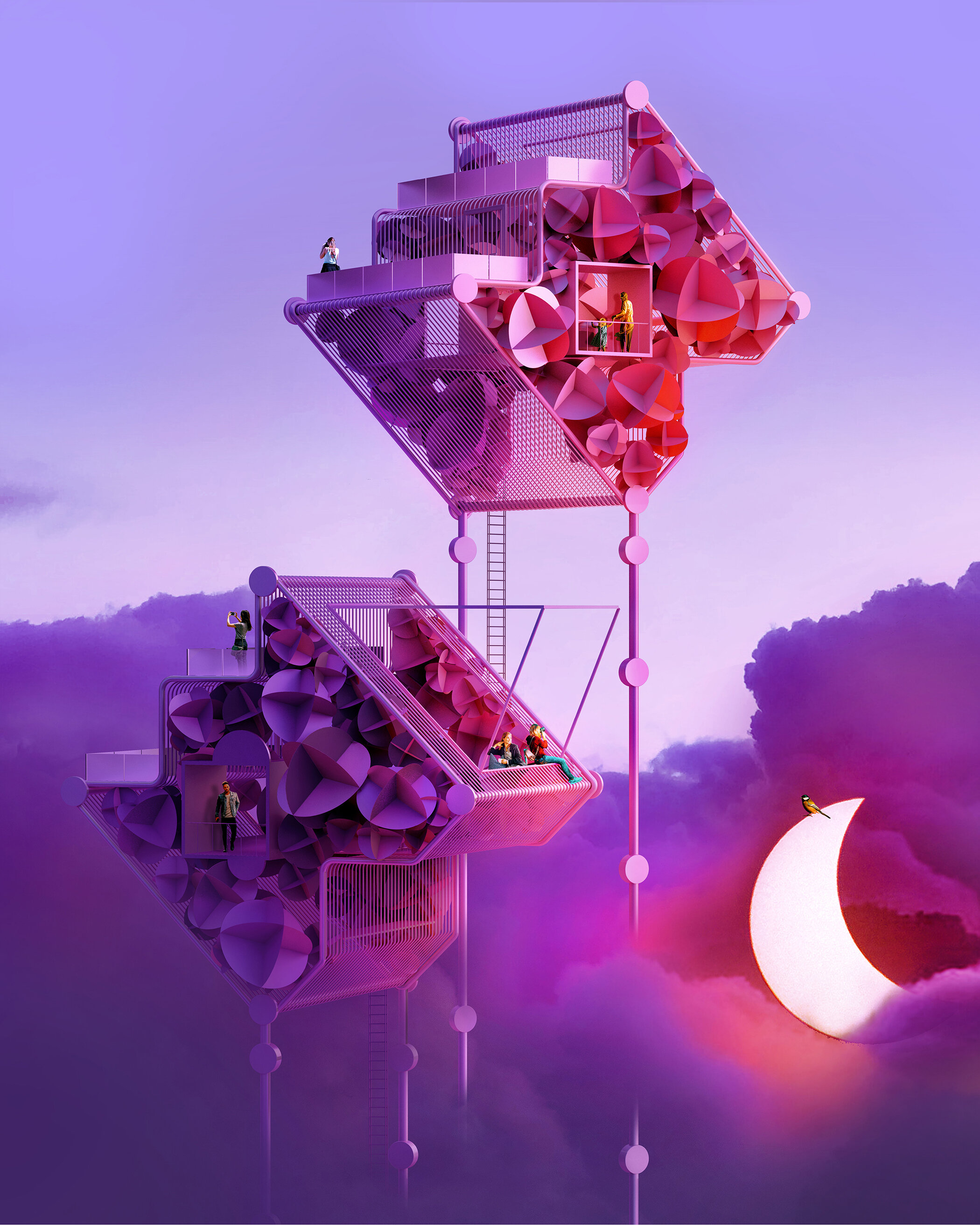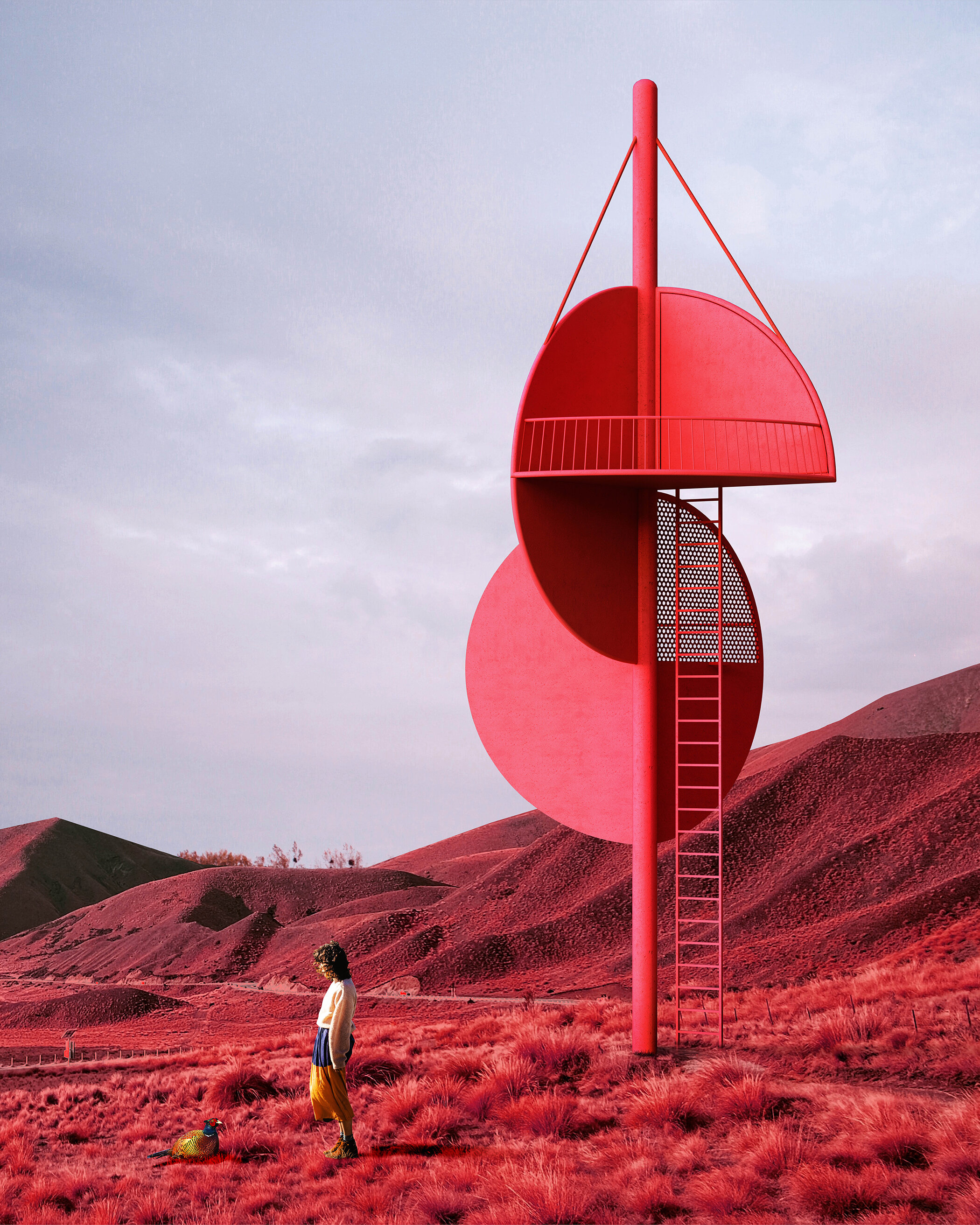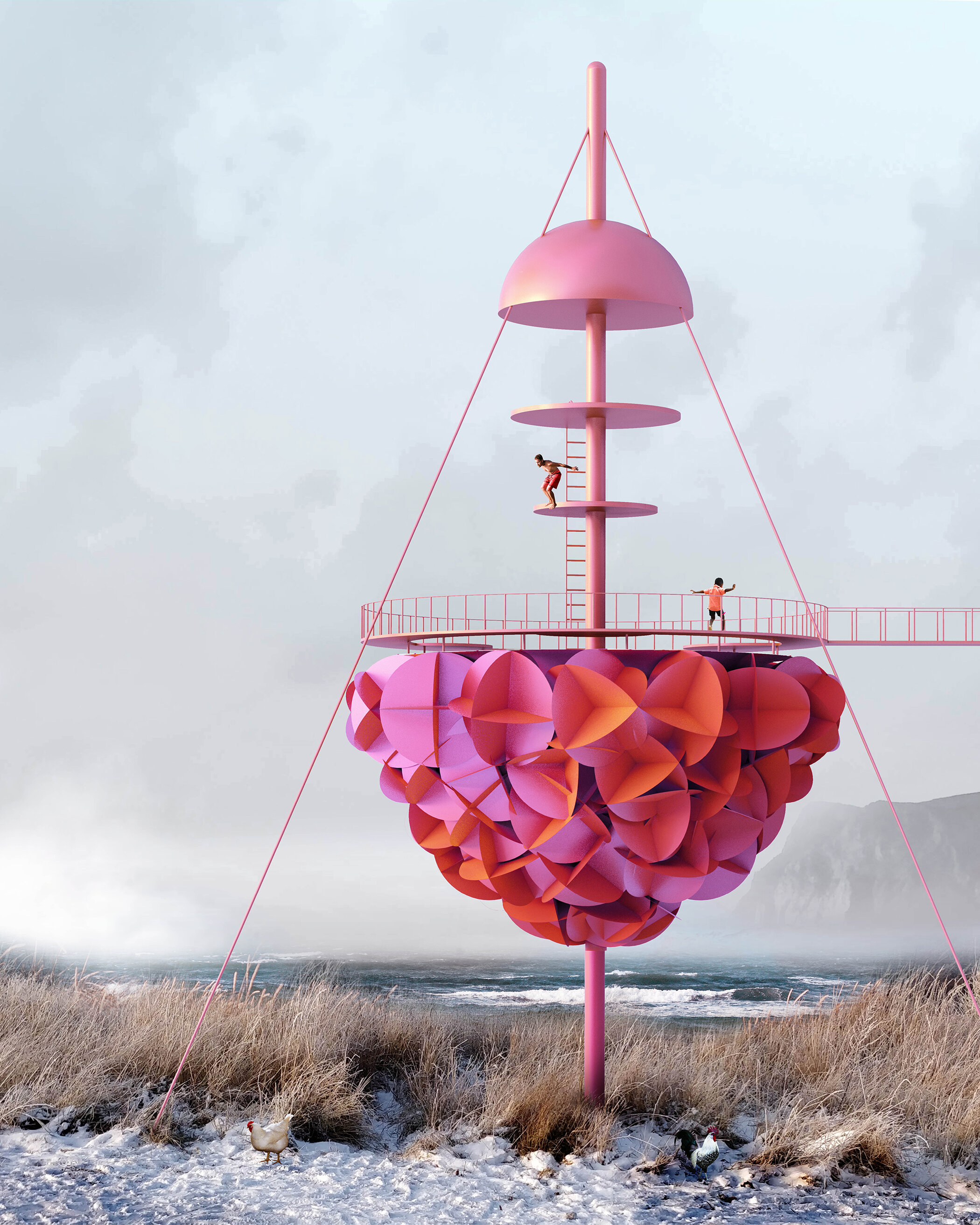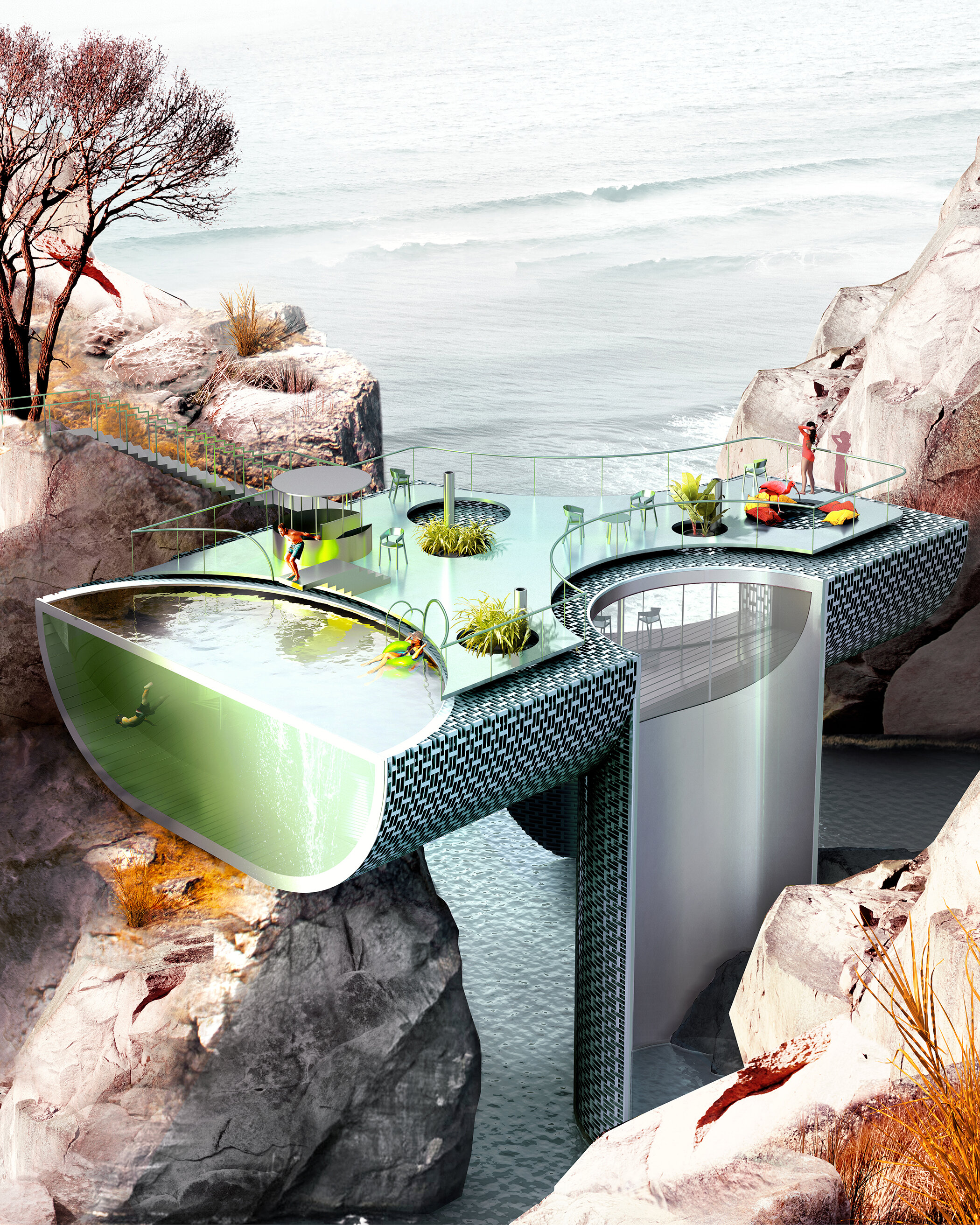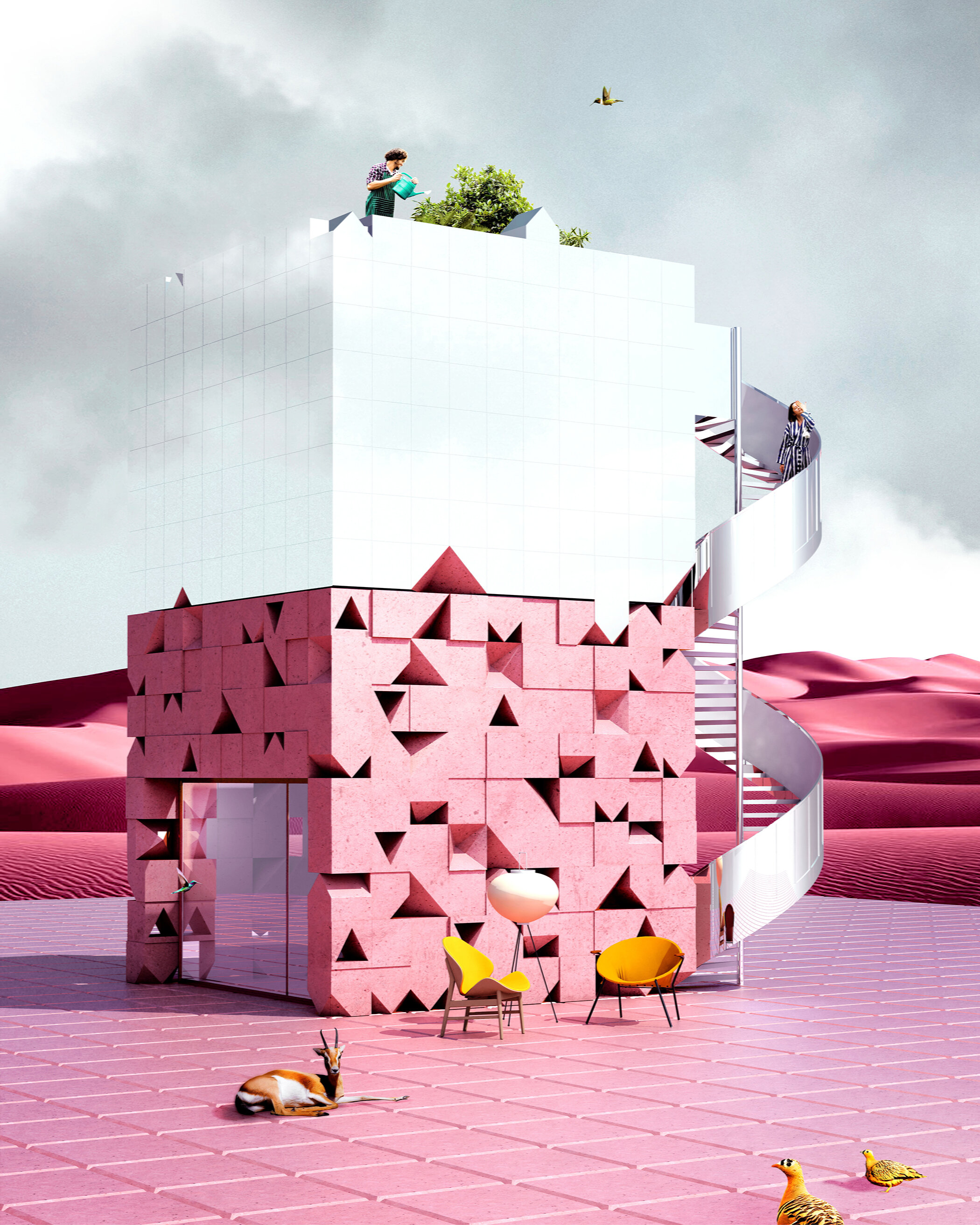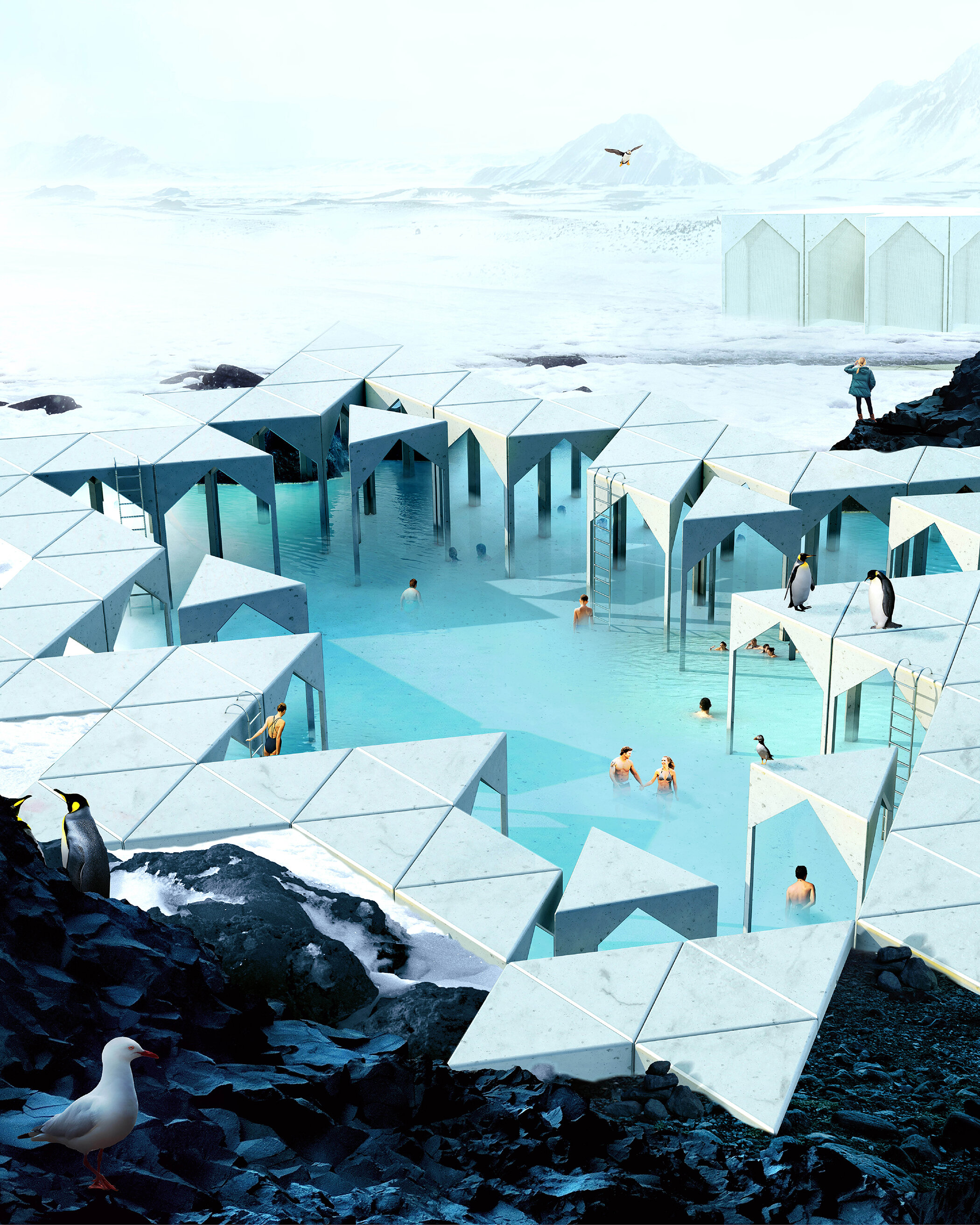ANTIREALITY
Limitless Imagination
Antireality embraces themes of surrealism, architecture and nature to create beautiful illustrations. Every composition is a journey through hidden landscapes, where humans and animals live in perfect harmony. As Antireality mentions in the interview, “the greatest flaw and advantage of working on Antireality is the lack of limits”.
For this interview, we will be talking about all the techniques, inspirations and stories behind this beautiful project that is Antireality.
Could you tell us a little bit about your project? What is AntiReality and how did it start?
My adventure with creating Antireality began one and a half years ago when an idea first sprouted in my mind. The idea to design a creative space that would allow one to be taken into a world deprived of boundaries that would give countless possibilities for experimenting and engaging in a creative search. At that time, I started working on the first concepts, as well as ponder upon and define the general character of my work. The main drive was to combine my passion for architecture and visualisation with my desire to experiment and to seek both nonstandard design proposals and interesting spatial functions.
In my works, I like touching upon subjects focused on exploring boundaries between architecture and nature, ways in which they could be integrated and also seeking geometric-spatial correlation existing in nature. My main goal was to create a world whose narration would be based on an architectural journey across the land of imagination. The reality I have created is founded on seeking unconventional architectural-spatial situations, that often oscillate between reality and dream.
For me, Antireality is a kind of a get-away from daily life, a space that shows an alternative image of the world that tells about fairy-tale-like utopias.
What I love the most about your images is that there seems to be an idea of a ‘journey through the world’, where you find these beautiful structures hidden in various landscapes. How do you get inspired to create your images? Is there a narrative behind them?
Yes, it is unquestionably a journey I am embarking on in my own imagination and it results in projects, illustrations that I consider somewhat photographs, souvenirs from a trip I have taken. This architectural stroll is primarily a part of my personal journey, the effects of which I share on Instagram. Each of the subjects I address is characterised by the theme of exploring architectural objects immersed in nature. The central theme is a get-away from daily routine and a search for new spatial forms.
I am motivated to create by my wish to discover and expand my own boundaries and to open my mind to a different outlook on reality. I seek daily inspirations both in nature and the space that surrounds me. I like to present myself with new tasks and provoke my mind to seek spatial answers dressed in architectural form.
“My main goal was to create a world whose narration would be based on an architectural journey across the land of imagination.”
Nature seems to be a cross topic in all your images - we can see Architecture and Nature coexist in perfect harmony. Could you tell us a little bit about that?
Yes, all objects are situated within a natural context. For me, nature is a significant part of each project. It plays the key role in the process of searching for an idea, serving as an infinite source of inspiration. When developing concept design, I always reflect on the way in which architecture and the natural context could be combined; sometimes such an idea turns into a central theme of an entire project. Common subjects that appear in my concepts are transformations of nature, use of contrast between nature and architecture or attempts at integrating objects into the natural context.
Could you tell us a little bit about how you use color in your images? There seems to be a dominant color in each scene, highlighting the Architecture, combined with Nature. How do you compose the colors? Do you decide the color palette before starting the image?
In the preliminary stage, I always plan the graphical expression of a given illustration, which to a high extent is determined by the level of realism in a given project. In the case of objects whose function is not that different from possibilities offered by existing technological development I practically always stick to assumptions adopted at the beginning of the project. The situation is completely different for fully abstract projects where I make the final decision about colours at the stage of creating illustrations. In such a case, while working on a 3D model, I focus on geometry, function, and proportions of the object, while using virtually the same material in rendering to obtain the effect of a monolithic structure. I am, by all means, open to experimenting with a full-colour palette and I try to emphasise the character of the proposed object and its context using a selected colour.
What’s your process like? Could you show us or talk about the process to create one of your images? What tools do you use? Do you always go through the same process or does it depend on the image?
During the process of creation, I always try to seek various ways of approaching a project. I have some ‘typologies’ that I use but I try to keep an open mind and always look for new means of expression, nonetheless. I start my work from formulating the main idea/theme that will lead me during my further exploration. This process is usually initiated under the influence of an external stimulus that triggers my imagination and entices my designer’s curiosity. At this stage, I create preliminary sketches, diagrams and notes focusing on the function and the geometry of the object, at the same time considering the visual content I want to convey. In 3d software (Rhino) I model variations based on previous drawings while experimenting with the form and materials. Having taken final decisions, I create renders using V-Ray. The last stage is work on the atmosphere, surroundings and the content of the visualization, which I also make in Photoshop.
What has been the most challenging image so far? Why?
A great challenge when creating each work is the attempt to translate an idea into a graphic language. In Antireality, this is accompanied by, oftentimes, an exaggerated and a distorted image of reality. The most difficult aspect of work is seeking a way of transferring an idea into a visualisation, so that the project idea could be read. The illustration that proved most problematic for me so far is the Underwater Observatory. Although it was not my first visualisation with water cross-section as the central theme, this approach was very time-consuming. When it comes to individual work, the common issue is the lack of external perspective and a fresh outlook on task implementation, and this is what was lacking when I was creating this illustration. The greatest flaw and advantage of working on Antireality is the lack of limits. The absence of restrictions gives remarkable freedom and at first, it may seem trivial, yet due to the unlimited possibilities regarding modifications at any stage of work I often get a feeling of dissatisfaction and a willingness to continuously improve works.
“The greatest flaw and advantage of working on Antireality is the lack of limits. ”
You have a lot of people who follow your work on Instagram! How often do you create your images? Has social media influenced the way you work or think about your work?
I always work on images in my spare time and I try to make as much time as possible. I have never happened to sit down, start working on a project and finish it in one day. My system is based on a frequent yet short work, with a single subject taking several days on average depending on the complexity and my ambition regarding a given project. It is hard for me to give a specific timeframe, as it is related to an irregular work schedule and a truly big difference in the difficulty level of individual works.
Social media, undoubtedly, has been a highly motivation to work and is a great way to reach a large audience. However, as for the work system itself and the subjects I address, I think that they didn’t change my approach in any substantial way. It is a process that takes place fully outside the Internet space, and I consider Instagram to be a platform for sharing results of my work.
What are your future plans for Anti Reality?
At the moment I find it to be still a quite fresh project; I am thinking about new directions, but I am still unsure whether they will be directed towards expanding Antireality or starting something completely new. At present, it is hard for me to answer this question.
What advice has inspired you the most?
In life, I am by far more inspired by actions and activities taken by other people rather than advice and words. I myself seek inspiration in people who approach life, others, work/hobbies with dedication and passion, and make a positive impact on other people.
What advice would you give to young artists?
The piece of advice is a direct reference to the previous question. My suggestion is to surround yourself with people who have a positive influence on your life, inspire you to grow as a person and support you with your artistic search. I believe this will undoubtedly also translate into the creative space.
“Surround yourself with people who have a positive influence on your life, inspire you to grow as a person and support you with your artistic search.”
Antireality, thank you for taking the time to interview with Arch-Vizz and talk about work.
You can find more about Antireality's work on instagram @anti__reality.
Interview & Images Courtesy: Antireality
Interviewer: Stefani Fachini
